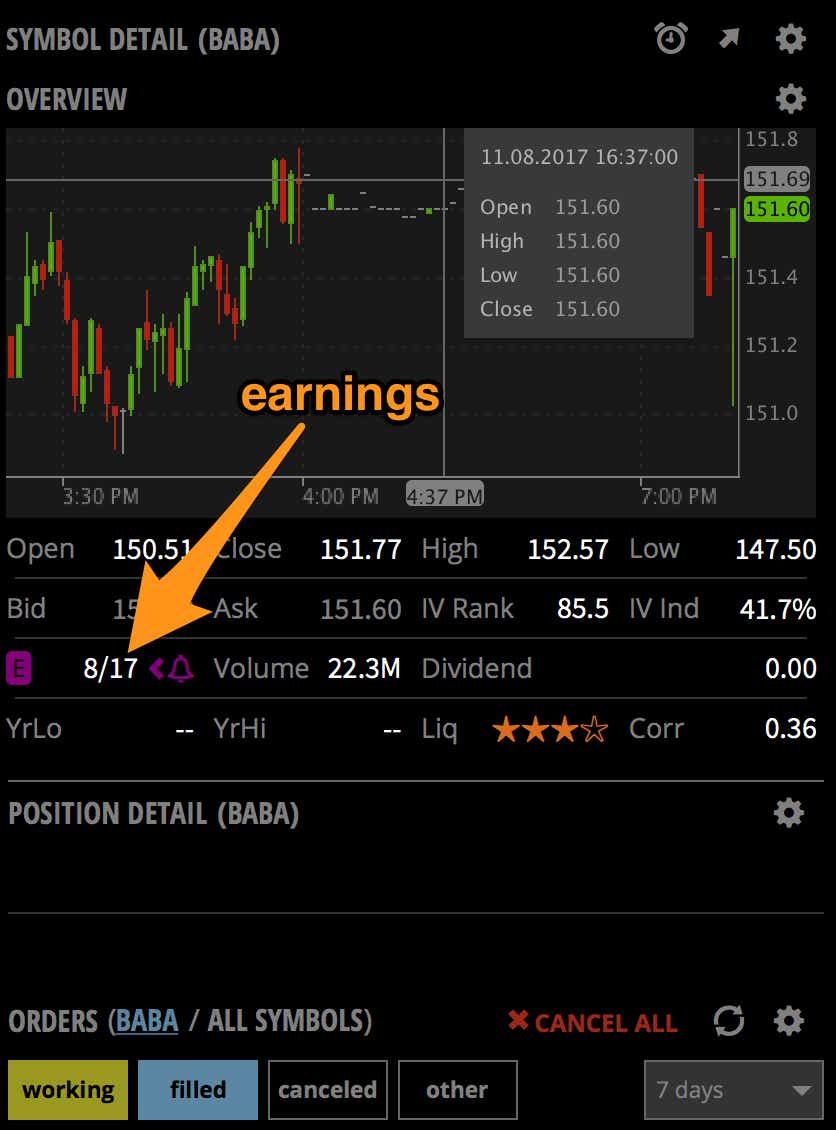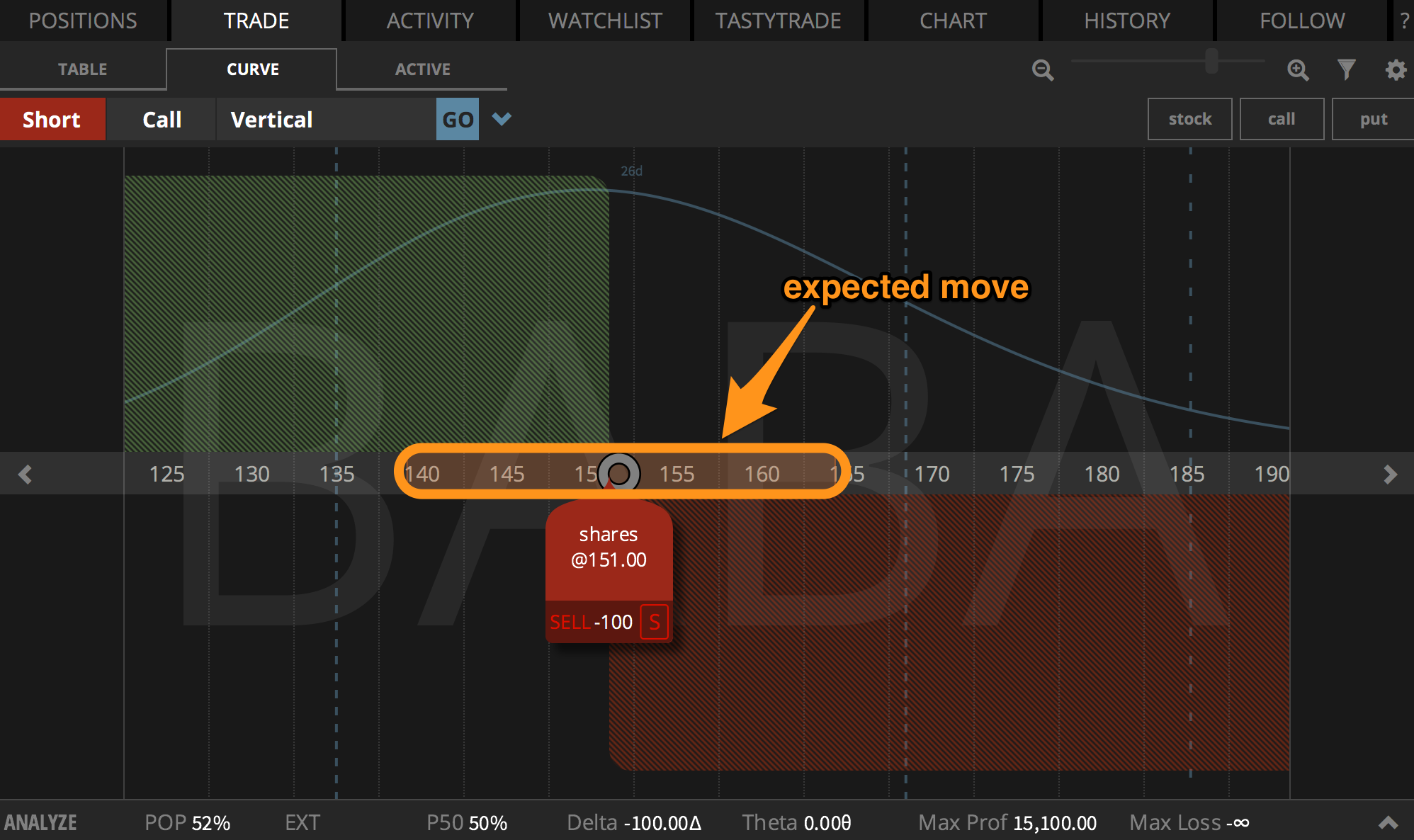Earnings & Options | Learn How To Trade Earnings

Earnings & Options | Learn How To Trade Earnings
By:Mike Butler
What Are Earnings?
When a publicly traded company announces earnings, they are reporting the profit that a company made for a set time period. Earnings are typically announced via a teleconference and are released to the public in report form quarterly/annually. This report usually announces after tax earnings per share (EPS), and EPS is weighed against analysts’ estimates.
Why Do Companies Have Earnings?
Companies have earnings announcements to show how their company is doing from a profitability standpoint. Many companies also release plans for the future. If the company performed poorly, they may include reasons that the company missed profit targets.
EARNINGS IN tastytrade
Let’s check out a couple places where you can find earnings dates within tastytrade:

- The first place you will see earnings in tastytrade is on the watchlist page (pictured below). If you click on the watchlists tab, you can scroll down to the "Upcoming Earnings" page. If you are using a different watchlist, you can click on the filter button to select the underlyings within that watchlist that are in a given earnings range.
- The best place to find detailed information on earnings is clicking on the arrow at the top right of the screen once an underlying is selected. Clicking on the arrow will open a panel that displays earnings information (pictured to the right).

Binary Event – Earnings
At tastylive, we consider earnings announcements to be binary events. To put it simply, binary events in the financial world are events that either have a positive or negative outcome.
Earnings events are what we call tradable binary events. On the day of an earnings announcement (or day prior depending on when the earnings announcement is - announcements can be made before the market opens of after the market closes), uncertainty peaks. This means that the underlying will experience some of its most extreme levels of volatility.
If you like to trade based on volatility, this means that you have an opportunity to exploit the spike in implied volatility around earnings. At earnings, IV rank is typically at its highest levels (but not always).
So how can you exploit the expected volatility crush that comes after a binary event? One option (our personal favorite) is to sell premium around earnings.
What's the first step to doing this? Picking an expiration date!
Choosing An Expiration
Think of implied volatility in relation to earnings as an upward climb. Implied volatility grows and grows as earnings near, and after earnings are announced, that upward climb turns into a downward spiral.
We want our trade to capture the peak of the climb, not the bottom of our spiral.
That is why when trading earnings, we always choose the option expiration date that is nearest to the earnings announcement but after the date of the actual announcement.
Now that we have picked a date, the next step is to pick a direction (bearish, bullish, or neutral). Then, we need to figure out at what strike price we want to place our trade (which helps determine our break even point). This can be a tricky decision, but you do have a lifeline!
Expected Move
If you want to make an earnings play (another name for placing a trade specifically to capture the volatility crush that occurs during earnings), choosing the right strike price(s) can be a difficult task.
Luckily for you, tastytrade has a tool that can help you decide your strikes!
Explained simply, expected move is an analysis tool you can use to see what the market expects out of the earnings announcement.
How to Find Expected Move on tastytrade
If you go to the trade page on tastytrade, you can find expected move on the curve page. To make sure expected move is displayed, click on: Trade, Curve, the settings button, and then select "Price Range Overlay Expected Move."
That is where the magic happens!

The expected move setting (the pale red bar) is used for earnings to signify a range that the stock price is likely to end up between, after earnings.
The expected move range is calculated by multiplying the ATM straddle (a strategy that combines selling an at the money call and put) in the nearest expiration by 0.85.
The end result is a +- number that we apply above and below the current stock price evenly. By incorporating this number on the strike price bar in tastytrade, you can easily maneuver your strike prices and clearly see if your breakevens cover the expected move or not.
Earnings Strategies
As we’ve discussed in this article, an earnings event is a binary event that holds a lot of uncertainty. This uncertainty causes implied volatility & IV Rank to spike, and when the announcement is made, IV is crushed shortly after. For this reason, our main earnings strategy is selling premium. This means that any strategy that allows us to place a trade for a credit will do.
Below are a few suggestions for strategies to try based on your market assumption...
Bearish Strategies
Bullish Strategies
NEUTRAL Strategies
There are many other strategies to use for earnings plays, but for newer traders, these are great strategies to try around earnings!
(Learn more trading strategies through Step Up to Options)
Earnings Recap
- Earnings Announcements are binary events that happen quarterly/annually
- IV rank builds up and spikes just before an earnings announcement, then volatility crushes afterwards
- A good way to capitalize on volatility crushing after earnings is to sell premium (selling at the nearest expiration cycle that encompasses the announcement)
- Earnings and the expected move during earnings are tools built into tastytrade's platform
Options involve risk and are not suitable for all investors. Please read Characteristics and Risks of Standardized Options before deciding to invest in options.